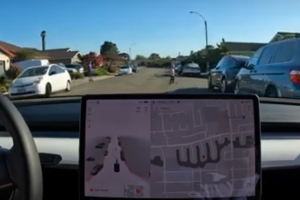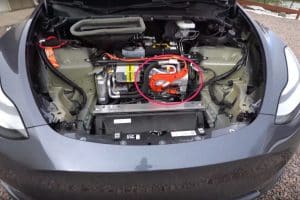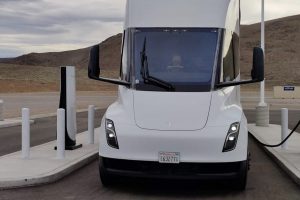- 💰 Cruise, a GM subsidiary, is offering $75,000 to resolve an investigation into its crash response involving a self-driving vehicle.
- 🚗 The incident occurred in October when a Cruise self-driving vehicle hit and dragged a pedestrian.
- 📝 The California Public Utilities Commission (CPUC) mandated a hearing, accusing Cruise of omitting details and misrepresenting its response to the accident.
- 🤝 Cruise’s settlement offering includes a commitment to internal process improvements, increased transparency, cooperation, and rebuilding regulatory trust with the CPUC.
- 📊 Cruise pledges to complete and publicize its internal investigation before the CPUC hearing, assisted by the legal firm Quinn Emanuel.
- 🚦 As part of the settlement, Cruise agrees to enhance its collision reporting efforts to the commission.
- 📅 Cruise must appear at a CPUC hearing set for February 6, addressing claims that critical details were omitted about the October 2 accident.
- 🚫 Following the accident, California revoked Cruise’s permit to operate driverless vehicles, leading to joint investigations from the state’s Department of Motor Vehicles (DMV) and the National Highway Traffic Safety Administration (NHTSA).
- 🔄 Cruise faced repercussions, including the recall of approximately 950 driverless vehicles, the resignation of the CEO and another founding executive, a halt in the production of the Origin self-driving van, and layoffs of nearly a quarter of its staff.
In the rapidly evolving landscape of autonomous vehicles, Cruise, a subsidiary of General Motors (GM), finds itself at the center of an investigation that has implications not only for the company but for the entire autonomous driving industry. In this blog post, we’ll delve into the details of Cruise’s $75,000 offer to resolve an investigation stemming from a self-driving vehicle incident, exploring the aftermath and its potential impact on the future of autonomous driving.
Unraveling the Incident
- The October Collision
- In October, a Cruise self-driving vehicle was involved in a collision that resulted in a pedestrian being hit and dragged.
- The incident raised questions about the effectiveness of autonomous driving systems and triggered a series of investigations into Cruise’s response.
- CPUC’s Accusations
- The California Public Utilities Commission (CPUC) took a stern stance, accusing Cruise of omitting crucial details and misrepresenting its response to the accident.
- The CPUC mandated a hearing, setting the stage for a thorough examination of Cruise’s actions and accountability.
Cruise’s Response and Commitments
- $75,000 Settlement Offer
- In a move to expedite the resolution process, Cruise has offered to pay $75,000 to settle the investigation.
- This monetary offer signals Cruise’s willingness to address the concerns raised by regulators and move towards a resolution.
- Commitment to Improvement
- Cruise’s settlement offering extends beyond a financial contribution; it includes a commitment to internal process improvements.
- The company aims to enhance transparency, cooperation, and rebuild regulatory trust with the CPUC.
- Legal Collaboration
- Cruise has enlisted the support of the legal firm Quinn Emanuel to conduct and publicize its internal investigation before the scheduled CPUC hearing.
- This collaboration emphasizes Cruise’s dedication to a thorough and transparent assessment of the incident.
The Path to Accountability
- Enhanced Collision Reporting
- As part of the settlement, Cruise has committed to enhancing its collision reporting efforts to the CPUC.
- This proactive measure indicates a recognition of the importance of clear and comprehensive reporting in the autonomous driving sector.
- CPUC Hearing on February 6
- The crucial date for Cruise is February 6, the day of the CPUC hearing, where the company must address the allegations and present its case.
- The outcome of this hearing will likely shape the regulatory landscape for autonomous driving in California.
Repercussions and Industry Impact
- Revoked Operating Permit
- In the aftermath of the incident, California swiftly revoked Cruise’s permit to operate driverless vehicles.
- This regulatory action highlighted the severity of the incident and triggered further investigations.
- Multi-Agency Investigations
- Cruise faced joint investigations from the state’s Department of Motor Vehicles (DMV) and the National Highway Traffic Safety Administration (NHTSA).
- The collaboration between these agencies reflects the cross-sector scrutiny of autonomous driving incidents.
- Company-wide Ramifications
- The incident’s fallout extended beyond regulatory actions, with Cruise recalling approximately 950 driverless vehicles.
- Leadership changes, including the resignation of the CEO and another founding executive, showcased the internal impact of the incident.
- Production Halts and Workforce Reductions
- Cruise’s response included halting the production of the Origin self-driving van, and the company announced layoffs of nearly a quarter of its staff.
- These measures indicate a recalibration of Cruise’s strategies and priorities in the wake of the incident.
Charting the Future of Autonomous Driving
As Cruise navigates the complex terrain of investigations and regulatory scrutiny, the broader autonomous driving industry watches closely. The outcome of the CPUC hearing and Cruise’s subsequent actions will likely set precedents for accountability, transparency, and cooperation in the autonomous vehicle sector.





